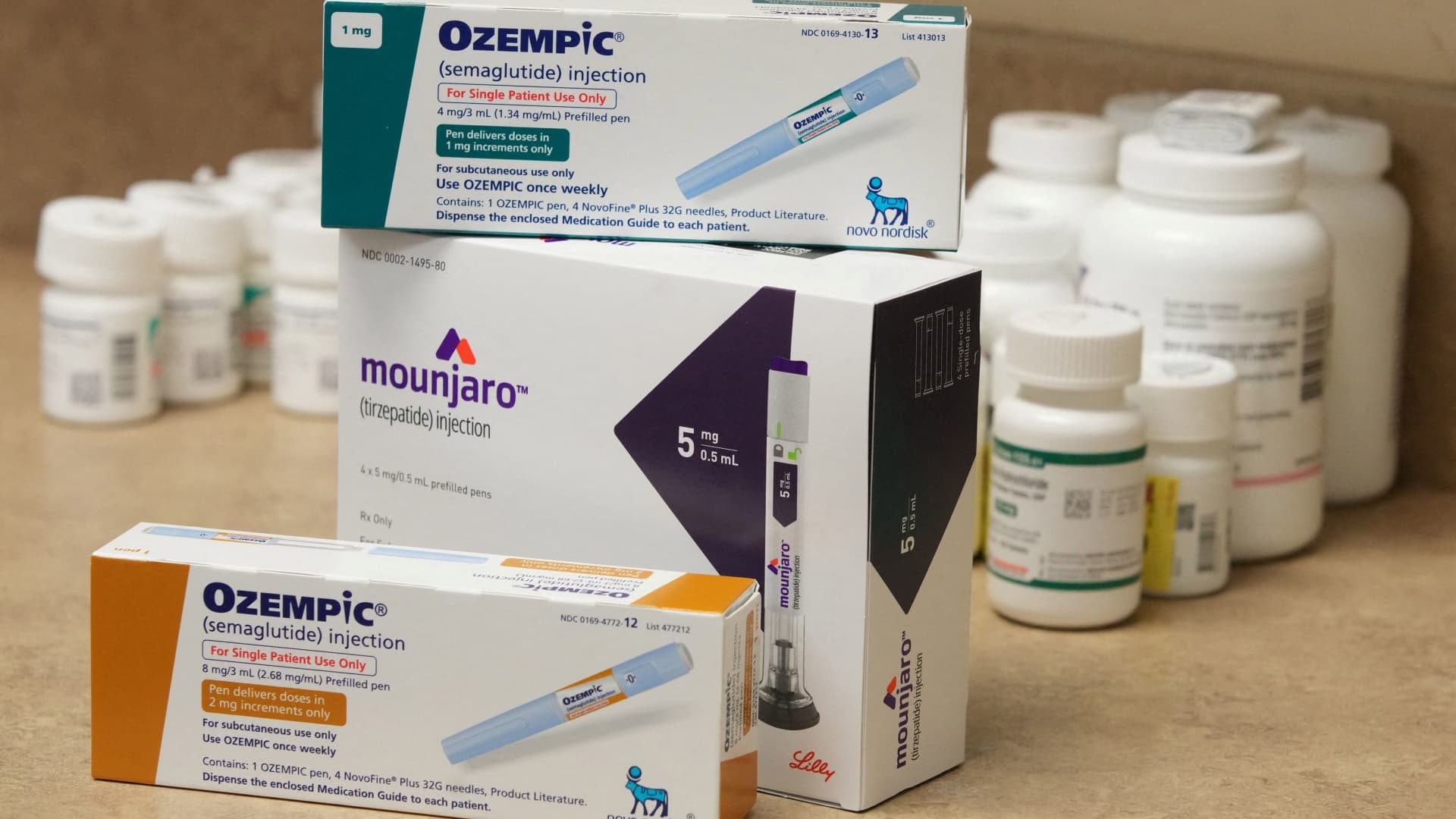Most analysts predict the market for new weight loss drugs like Wegovy and Mounjaro will be enormous, but estimates vary for its exact size depending on who you ask.
On Monday, Citi raised its estimate for incretin drug sales to $71 billion by 2035, up from its prior estimate of $55 billion. That viewpoint seems really conservative when placed side by side with predictions like Guggenheim’s. Last month, the firm made a case for there being a $150 billion to $200 billion opportunity for these drugs.
Guggenheim analyst Seamus Fernandez’s conviction comes from his belief that GLP-1-based incretins will become the most prescribed drugs ever by or before 2031. Not only do these drugs work well for managing insulin levels and helping patients lose weight, studies are underway to show their benefits for cardiovascular health, sleep apnea and chronic kidney disease to name a few.
Fernandez expects $50 billion in GLP-1 sales will come from patients with diabetes as incretin medication becomes the standard of care for this condition. Patients with obesity will add another $140 billion in sales, he said.
Citi’s forecast does reflect more modest assumptions. It is assuming the number of patients opting for the weekly injections will be below 10% of the non-Medicare obese patient population.
“Despite the obvious demand and unmet medical need, we continue to struggle with our inability to predict with any accuracy the long-term upside for incretins given the >42% prevalence of obesity,” analyst Andrew Baum, wrote in a research note Monday.
The drugs are very pricey, with a list price of as much as $1,350 per month for Wegovy. At the moment, private insurance coverage isn’t a guarantee for those seeking weight loss treatment, and the federal Medicare program doesn’t cover weight loss drugs at all.
Still, the insurance situation is improving, as are supply bottlenecks.
Quite a number of analysts expect these issues will be worked out over time and expect peak sales for these medications to reach around $100 billion by 2030. Goldman Sachs joined this camp last Monday with its latest forecast.
“In 2030, we estimate that ~15mn adults in the US will be treated with AOM [anti-obesity medication] for chronic weight management (excluding patients treated for type 2 diabetes), which represents ~13% penetration into the U.S. adult population,” analyst Chris Shibutani wrote in a research note.
Shibutani said about $52 billion will be captured by Eli Lilly, which sells Mounjaro, or tirzepatide. Lilly expects the Food and Drug Administration to approve this drug to treat obesity by the end of this year. Its pipeline also includes experimental, next-generation incretins orforglipron and retatrutide.

Novo Nordisk, which is already approved to sell Wegovy (semaglutide) as a weight loss treatment, also has additional AOM drugs in its pipeline such as CagriSema.
Many industry analysts anticipate that Novo Nordisk and Lilly will reign over this market segment in a duopoly for quite a while. There are some other drugmakers looking to enter this segment, but they remain significantly behind. Goldman’s model forecasts the two companies will have an 80% share of the market in 2030.
Both stocks are up significantly on the back of optimism for the anti-obesity drug market. Lilly shares have gained nearly 60%, while Novo Nordisk has climbed more than 40%.
Read more in CNBC PRO:
- These stocks are trying to solve a major shortcoming of weight loss drugs: Shrinking muscle mass
- Many are betting Ozempic will reduce the need for knee surgery. What it means if they’re wrong
- Which stocks might be disrupted next by Ozempic and other GLP-1 drugs
- Bank of America sees risks for employers as insurance coverage of weight loss drugs grows
